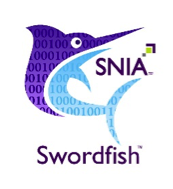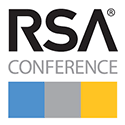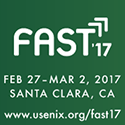- Major components of the IP-Based Drive Management Standard
- How the standard leverages the DMTF Redfish management standard to manage IP-Based Drives
- The standard management interface for drives that are part of JBOD (Just A Bunch Of Disks) or JBOF (Just A Bunch Of Flash) enclosures

Object Drives Now Have a Management Standard
Mar 9, 2017

Live Stream: What’s Happening with Enterprise Hyperscaler Storage
Mar 7, 2017

- Increasing attention to the fast growing Hyperscaler storage market by drive and SDS vendors
- Metrics for disk: IOPS, capacity, lower tail latency, security and lower TCO
- The importance of tail latency and tail latency remediation
- Current fractured approach of new features via RFP procurement does not scale
- The impact on the supply chain
- How the industry can respond to these technical requirements to promote adoption and standards for Hyperscaler storage
- Case study – large global bank goes Hyperscaler
Leave a Reply
Live Stream: What’s Happening with Enterprise Hyperscaler Storage
Mar 7, 2017

- Increasing attention to the fast growing Hyperscaler storage market by drive and SDS vendors
- Metrics for disk: IOPS, capacity, lower tail latency, security and lower TCO
- The importance of tail latency and tail latency remediation
- Current fractured approach of new features via RFP procurement does not scale
- The impact on the supply chain
- How the industry can respond to these technical requirements to promote adoption and standards for Hyperscaler storage
- Case study – large global bank goes Hyperscaler
Leave a Reply
Latency Budgets for Solid State Storage Access
Mar 7, 2017

- Why latency is important in accessing solid state storage
- How to determine the appropriate use of networking in the context of a latency budget
- Do's and don'ts for Load/Store access
Find a similar article by tags
Solid State StorageLeave a Reply
Latency Budgets for Solid State Storage Access
Mar 7, 2017

New solid state storage technologies are forcing the industry to refine distinctions between networks and other types of system interconnects. The question on everyone’s mind is: when is it beneficial to use networks to access solid state storage, particularly persistent memory?
It’s not quite as simple as a “yes/no” answer. The answer to this question involves application, interconnect, memory technology and scalability factors that can be analyzed in the context of a latency budget.
On April 19th, Doug Voigt, Chair SNIA NVM Programming Model Technical Work Group, returns for a live SNIA Ethernet Storage Forum webcast, “Architectural Principles for Networked Solid State Storage Access – Part 2” where we will explore latency budgets for various types of solid state storage access. These can be used to determine which combinations of interconnects, technologies and scales are compatible with Load/Store instruction access and which are better suited to IO completion techniques such as polling or blocking.
In this webcast you’ll learn:
- Why latency is important in accessing solid state storage
- How to determine the appropriate use of networking in the context of a latency budget
- Do’s and don’ts for Load/Store access
This is a technical seminar built upon part 1 of this series. If you missed it, you can view it on demand at your convenience. It will give you a solid foundation on this topic, outlining key architectural principles that allow us to think about the application of networked solid state technologies more systematically.
I hope you will register today for the April 19th event. Doug and I will be on hand to answer questions on the spot.
Leave a Reply
SNIA Swordfish is Swimming Fast - Catch Up Now!
Feb 27, 2017

 If you haven’t caught the updates on SNIA SwordfishTM lately, please read on because it’s swimming fast! The new SNIA specification offers a unified approach to managing storage and servers in environments like hyperscale and cloud infrastructures. SNIA’s Scalable Storage Management Technical Work Group (SSM TWG) just announced completion of Version 1.0.3. The new version reflects specification enhancements in multiple areas plus a User’s Guide, multiple new use cases and a new document section.
“Because SNIA Swordfish is an extension to DMTF’s (Distributed Management Task Force) open industry Redfish™ standard, it specifies the same RESTful interface and utilizes JavaScript Object Notation and Open Data Protocol to help customers integrate solutions within their existing tool chains,” said Don Deel, Chairman, SNIA Storage Management Initiative. “The SSM TWG members responsible for helping develop SNIA Swordfish represent many of the leading companies in the storage industry today, including Broadcom, Dell EMC, HPE, Intel, Microsoft, NetApp, Nimble Storage and VMware.”
You can also keep up with the latest Swordfish updates by continually visiting the SNIA Swordfish website. If you’re interested in helping shape the future of storage management by getting involved in the development of SNIA Swordfish, please e-mail storagemanagement@snia.org.
If you haven’t caught the updates on SNIA SwordfishTM lately, please read on because it’s swimming fast! The new SNIA specification offers a unified approach to managing storage and servers in environments like hyperscale and cloud infrastructures. SNIA’s Scalable Storage Management Technical Work Group (SSM TWG) just announced completion of Version 1.0.3. The new version reflects specification enhancements in multiple areas plus a User’s Guide, multiple new use cases and a new document section.
“Because SNIA Swordfish is an extension to DMTF’s (Distributed Management Task Force) open industry Redfish™ standard, it specifies the same RESTful interface and utilizes JavaScript Object Notation and Open Data Protocol to help customers integrate solutions within their existing tool chains,” said Don Deel, Chairman, SNIA Storage Management Initiative. “The SSM TWG members responsible for helping develop SNIA Swordfish represent many of the leading companies in the storage industry today, including Broadcom, Dell EMC, HPE, Intel, Microsoft, NetApp, Nimble Storage and VMware.”
You can also keep up with the latest Swordfish updates by continually visiting the SNIA Swordfish website. If you’re interested in helping shape the future of storage management by getting involved in the development of SNIA Swordfish, please e-mail storagemanagement@snia.org.
Leave a Reply
Rock n’ Roll with SMB3
Feb 23, 2017

Server Message Block (SMB) is the core file-transfer protocol of Windows, MacOS and Samba, and has become widely deployed. It’s ubiquitous – a 30-year-old family of network code.
However, the latest iteration of SMB3 is almost unrecognizable when compared to versions only a few years old. That’s why the SNIA Ethernet Storage Forum (ESF) has invited Microsoft’s Ned Pyle, program manager of the SMB protocol, to speak at our live webcast, “Rockin’ and Rollin’ with SMB3.”
Extensive reengineering has led to advanced capabilities that include multichannel, transparent failover, scale out, and encryption. SMB Direct makes use of RDMA networking, creates block transport system and provides reliable transport to zetabytes of unstructured data, worldwide.
SMB3 forms the basis of hyperconverged and scale-out systems for virtualization and SQL Server. It is available for a variety of hardware devices, from printers, network-attached storage appliances, to Storage Area Networks. It is often the most prevalent protocol on a network, with high-performance data transfers as well as efficient end-user access over wide-area connections. Register now for the live event on April 5th to hear:
- Brief background on SMB
- An overview of the SMB 3.x family, first released with Windows 8, Windows Server 2012, MacOS 10.10, Samba 4.1, and Linux CIFS 3.12
- What changed in SMB 3.1.1
- Understanding SMB security, scenarios, and workloads
- The deprecation and removal of the legacy SMB1 protocol
- How SMB3 supports hyperconverged and scale-out storage
This is a unique opportunity to “rock out” with an SMB3 expert on the front lines at Microsoft. We hope to see you on April 5th.
Leave a Reply
SNIA Activities in Security, Containers, and File Storage on Tap at Three Bay Area Events
Feb 14, 2017

 February 14-17 2017, join SNIA in San Francisco at the RSA Conference in the OASIS Interop: KMIP & PKCS11 booth S2115. OASIS and SNIA member companies will be demonstrating OASIS Key Management Interoperability Protocol (KMIP) through live interoperability across all participants. SNIA representatives will be on hand in the booth to answer questions about the Storage Security Industry Forum KMIP Conformance Test Program, which enables organizations with KMIP implementations to validate the protocol conformance of those products and meet market requirements for secure, plug-and-play storage solutions. And Eric Hibbard, Chair of the SNIA Security Technical Work Group and CTO Security and Privacy, HDS Corporation, will participate in the “Can I Get a Witness? Technical Witness Bootcamp” session on February 17.
February 14-17 2017, join SNIA in San Francisco at the RSA Conference in the OASIS Interop: KMIP & PKCS11 booth S2115. OASIS and SNIA member companies will be demonstrating OASIS Key Management Interoperability Protocol (KMIP) through live interoperability across all participants. SNIA representatives will be on hand in the booth to answer questions about the Storage Security Industry Forum KMIP Conformance Test Program, which enables organizations with KMIP implementations to validate the protocol conformance of those products and meet market requirements for secure, plug-and-play storage solutions. And Eric Hibbard, Chair of the SNIA Security Technical Work Group and CTO Security and Privacy, HDS Corporation, will participate in the “Can I Get a Witness? Technical Witness Bootcamp” session on February 17.
 The following week, February 21-23, join SNIA at Container World in Santa Clara CA. Enabling access to memory is an important concern to container designers, and Arthur Sainio, SNIA NVDIMM Special Interest Group Co-Chair from SMART Modular, will speak on Boosting Performance of Data Intensive Applications via Persistent Memory. Integrating containers into legacy solutions will be a focus of a panel where Mark Carlson, SNIA Technical Council Co-Chair from Toshiba, will speak on Container Adoption Paths into Legacy Infrastructure. SNIA experts will be joined by other leaders in the container ecosystem like Docker, Twitter, ADP, Google, and Expedia . The SNIA booth will feature cloud infrastructure and storage discussions and a demonstration of a multi-vendor persistent memory solution featuring NVDIMM! (P.S. – Are you new to containers? Get a head start on conference discussions by checking out a December 2016 SNIA blog on Containers, Docker, and Storage.)
The following week, February 21-23, join SNIA at Container World in Santa Clara CA. Enabling access to memory is an important concern to container designers, and Arthur Sainio, SNIA NVDIMM Special Interest Group Co-Chair from SMART Modular, will speak on Boosting Performance of Data Intensive Applications via Persistent Memory. Integrating containers into legacy solutions will be a focus of a panel where Mark Carlson, SNIA Technical Council Co-Chair from Toshiba, will speak on Container Adoption Paths into Legacy Infrastructure. SNIA experts will be joined by other leaders in the container ecosystem like Docker, Twitter, ADP, Google, and Expedia . The SNIA booth will feature cloud infrastructure and storage discussions and a demonstration of a multi-vendor persistent memory solution featuring NVDIMM! (P.S. – Are you new to containers? Get a head start on conference discussions by checking out a December 2016 SNIA blog on Containers, Docker, and Storage.)
 Closing out February, find SNIA at their booth at USENIX FAST from February 27-March 2 in Santa Clara, CA, where you can engage with SNIA Technical Council leaders on the latest activities in file and storage technologies.
We look forward to seeing you at one (or more) of these events!
Closing out February, find SNIA at their booth at USENIX FAST from February 27-March 2 in Santa Clara, CA, where you can engage with SNIA Technical Council leaders on the latest activities in file and storage technologies.
We look forward to seeing you at one (or more) of these events!
Find a similar article by tags
CDMI Cloud Storage Cloud Storage Cloud Storage data center file storage securityLeave a Reply
Would You Like Some Rosé with Your iSCSI?
Feb 3, 2017

- iSCSI definition
- iSCSI offload
- Host-based iSCSI
- TCP offload
Leave a Reply
Would You Like Some Rosé with Your iSCSI?
Feb 3, 2017

Would you like some rosé with your iSCSI? I’m guessing that no one has ever asked you that before. But we at the SNIA Ethernet Storage Forum like to get pretty colorful in our “Everything You Wanted To Know about Storage But Were Too Proud To Ask” webcast series as we group common storage terms together by color rather than by number.
In our next live webcast, Part Rosé – The iSCSI Pod, we will focus entirely on iSCSI, one of the most used technologies in data centers today. With the increasing speeds for Ethernet, the technology is more and more appealing because of its relative low cost to implement. However, like any other storage technology, there is more here than meets the eye.
We’ve convened a great group of experts from Cisco, Mellanox and NetApp who will start by covering the basic elements to make your life easier if you are considering using iSCSI in your architecture, diving into:
- iSCSI definition
- iSCSI offload
- Host-based iSCSI
- TCP offload
Like nearly everything else in storage, there is more here than just a protocol. I hope you’ll register today to join us on March 2nd and learn how to make the most of your iSCSI solution. And while we won’t be able to provide the rosé wine, our panel of experts will be on-hand to answer your questions.







Leave a Reply